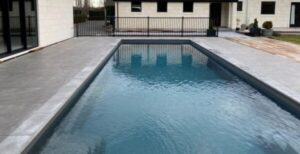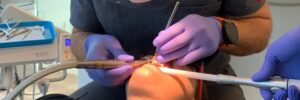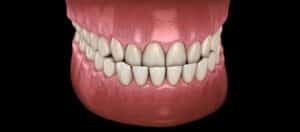Are you an adult looking to achieve a straighter smile through orthodontic treatment? You’re not alone! Many adults in New Zealand are seeking orthodontic solutions to improve their smiles.
In this comprehensive guide, we will explore the different types of adult braces available in New Zealand, their benefits, considerations, and costs. Whether you’re considering traditional metal braces, clear aligners, ceramic braces, or lingual braces, we’ve got you covered. Let’s dive in!
Traditional Metal Braces: Effective and Affordable
How They Work Traditional metal braces have been a popular choice for orthodontic treatment for over a century. They consist of metal brackets and bands that are attached to the teeth and connected by thin metal wires and elastomeric bands. These braces exert gentle pressure on the teeth, gradually moving them into their correct positions. The wires and bands are adjusted periodically by your orthodontist to ensure continual activation of the braces.
Pros
- Highly effective in treating complex orthodontic issues, including severe misalignments.
- Often the most affordable option for orthodontic treatment.
- Suitable for adults and children alike.
- Ability to customize with different coloured elastomeric bands.
Cons
- Most noticeable type of braces, which can be a concern for adults seeking a more discreet option.
- Initial discomfort as the mouth and gums get used to the braces.
- Cleaning around the brackets and wires requires extra effort to maintain good oral hygiene.
- Certain dietary restrictions to prevent damage to the braces.
Clear Aligners: Virtually Invisible
How They Work Clear aligners, such as Invisalign, are a popular choice for adults seeking a nearly invisible orthodontic treatment. These aligners are made of clear, removable trays that fit snugly over your teeth. Each set of aligners is worn for one to two weeks, gradually shifting your teeth into the desired position. Treatment progress can be remotely monitored through smartphone apps, reducing the need for frequent in-person visits.
Pros
- Virtually invisible, making them ideal for adults who desire a discreet treatment option.
- Removable, allowing for easier maintenance of oral hygiene and the freedom to eat and drink without restrictions.
- Custom-made for a comfortable fit.
- No irritation or potential marks on the front surface of the teeth.
Cons
- Limited to treating minor orthodontic complaints.
- Requires discipline and consistency in wearing the aligners for optimal results.
- May not be suitable for complex orthodontic issues.
Ceramic Braces: Discreet and Effective
How They Work Ceramic braces offer a more discreet alternative to traditional metal braces. Like metal braces, they use brackets and wires to gradually move the teeth into their desired positions. The main difference is the aesthetic appearance of the ceramic brackets, which blend in with the natural colour of your teeth, making them less noticeable.
Pros
- Less noticeable than traditional metal braces, making them a popular choice among adults.
- Effective in treating a wide range of orthodontic issues.
- Customizable with clear or tooth-coloured elastomeric bands.
- Can provide excellent results while maintaining a more aesthetically pleasing appearance.
Cons
- Can be more expensive than traditional metal braces.
- Possibility of staining if clear elastomeric bands are used and good oral hygiene is not maintained.
- Ceramic brackets may be more prone to chipping or cracking compared to metal brackets.
- Treatment duration is typically longer than with metal braces.
Lingual Braces: Concealed from View
How They Work Lingual braces are one of the most discreet types of braces available. They are attached to the back surface of your teeth, making them virtually invisible when you smile. Lingual braces use thin metal brackets that are custom-made to fit your teeth. Although they may initially feel a bit uncomfortable, they provide effective results in aligning your teeth.
Pros
- Hidden from view, making them an excellent choice for individuals concerned about the aesthetics of wearing braces.
- Less risk of decalcification or marks on the front surface of the teeth.
- Custom-made for a precise fit.
- Suitable for treating a wide range of orthodontic issues.
Cons
- More costly than traditional braces.
- Longer treatment duration compared to conventional braces.
- Initial discomfort and potential impact on speech.
- Requires additional effort for oral hygiene maintenance.
Choosing the Right Braces for You
When it comes to choosing the right braces for your orthodontic treatment, it’s essential to consult with an experienced orthodontist. They will evaluate your unique dental alignment needs and provide tailored advice on the treatment options that will best suit your goals and lifestyle. Factors such as the complexity of your case, desired level of aesthetics, and budget will also be taken into consideration.
The cost of braces in New Zealand can vary depending on factors such as the type of braces used, the complexity of the case, and the length of treatment. Traditional metal braces tend to be the most cost-effective option, while clear aligners and lingual braces may be more expensive. It’s important to discuss the costs and payment options with your orthodontist to ensure that you have a clear understanding of the financial commitment involved.
In conclusion, adult braces offer a range of options to help you achieve a straighter and more confident smile. Whether you opt for traditional metal braces, clear aligners, ceramic braces, or lingual braces, the expertise of an orthodontist will guide you towards the most suitable treatment for your specific needs. Don’t hesitate to schedule a consultation with a trusted orthodontist to begin your journey towards a beautiful smile.
Note: The information provided in this article is for informational purposes only and should not be considered as professional medical advice. Please consult with a qualified orthodontist for personalized guidance and treatment options.











